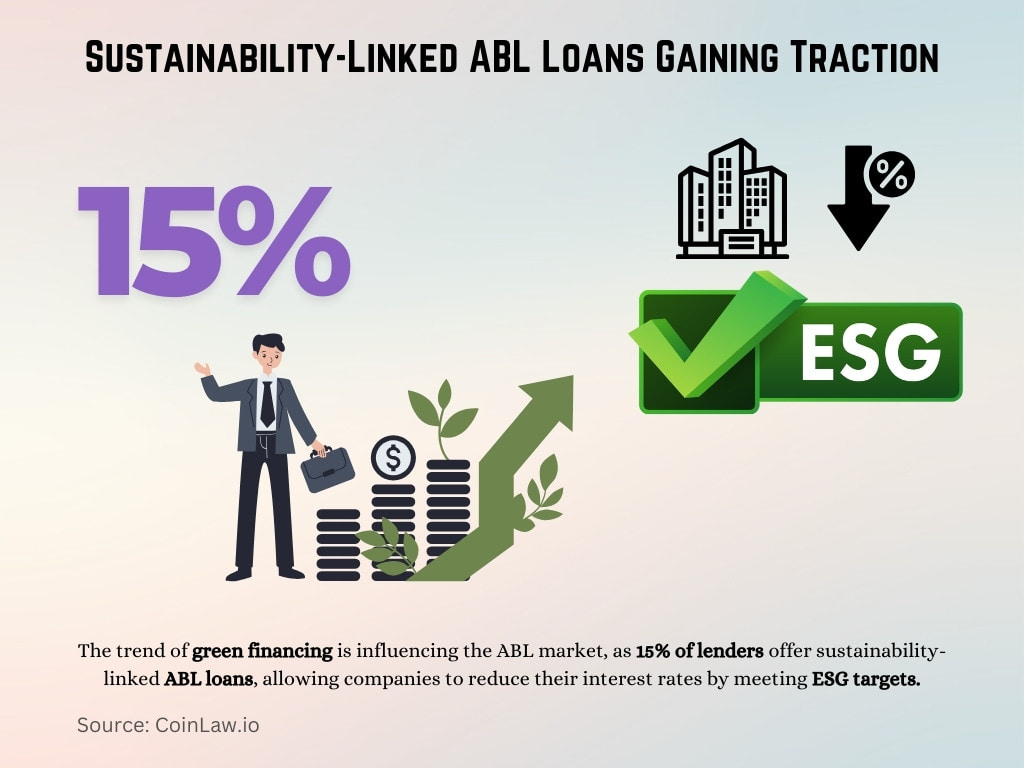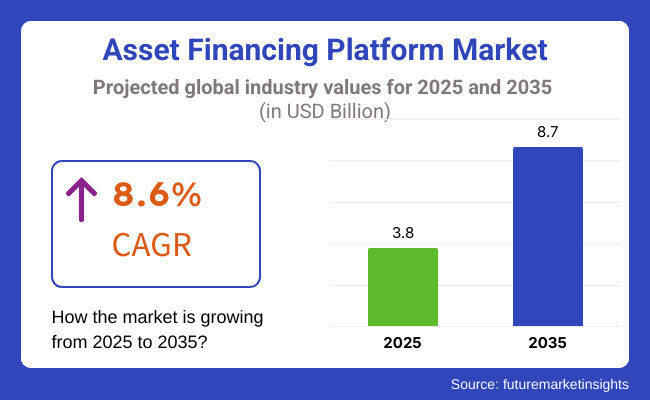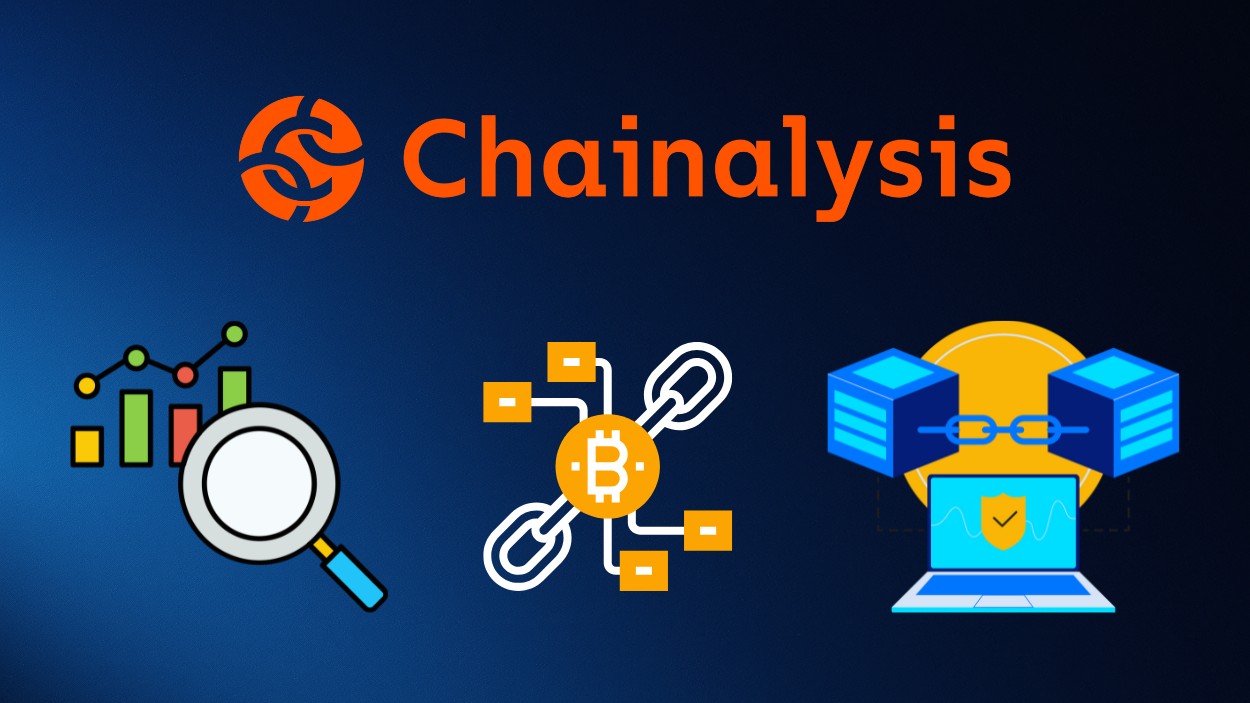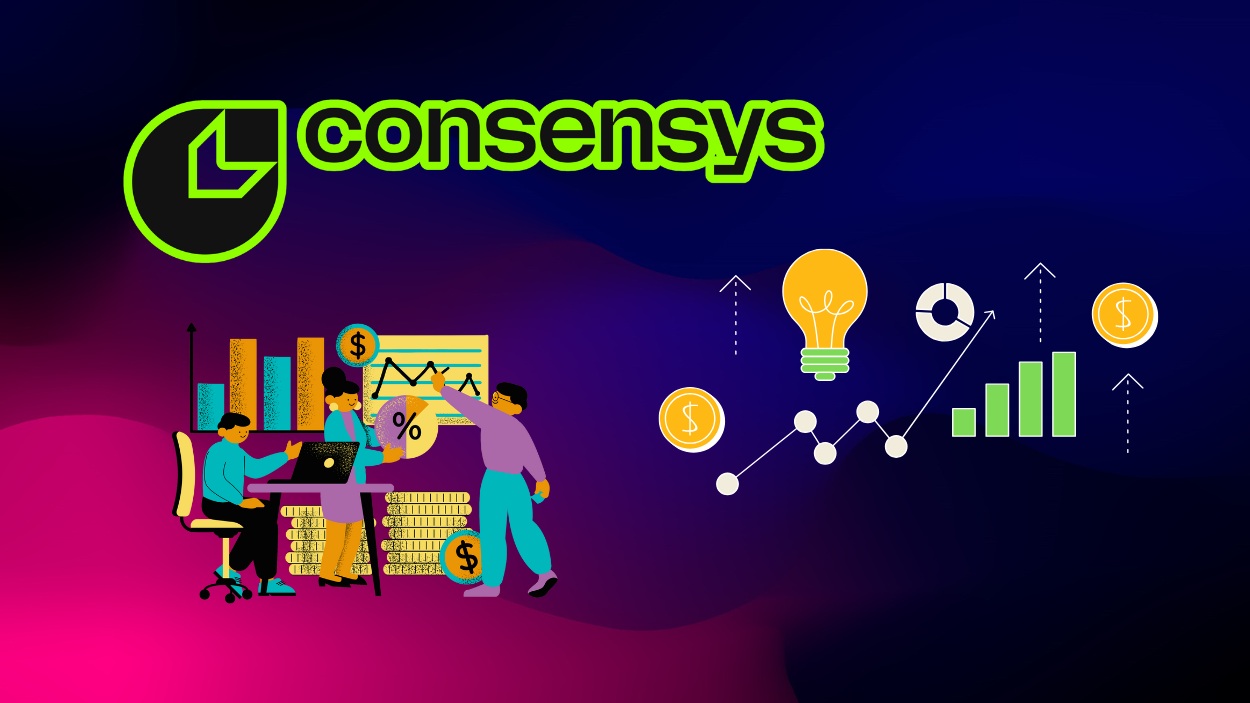The asset-based lending (ABL) industry has been quietly reshaping the financial landscape, providing businesses with a reliable and flexible financing option. In the face of fluctuating markets and growing operational costs, companies have increasingly turned to asset-based lending to unlock capital tied up in physical and financial assets. This alternative lending model allows businesses to leverage their inventory, accounts receivable, and equipment to secure loans, facilitating growth even during periods of economic uncertainty. As we look into 2025, the ABL sector is poised for significant growth, driven by evolving market trends and technological innovations.
Editor’s Choice: Key Trends Driving the Industry
- The ABL market size in the U.S. is projected to reach approximately $632 billion by the end of 2025, growing at a 5.3% year-over-year rate, supported by demand from mid-market borrowers navigating tight credit conditions.
- The global asset-based lending market is now forecasted to grow at a CAGR of 7.6% from 2025 to 2031, driven by heightened demand for collateral-backed financing amid rising interest rates and credit tightening.
- In 2025, around 63% of mid-sized U.S. companies rely on ABL for liquidity management, reflecting a continued shift away from covenant-heavy traditional loans.
- Digital transformation continues to reshape the ABL landscape, with over 78% of lenders now utilizing AI-based automation tools for risk scoring, compliance, and real-time collateral monitoring.
- Cross-border ABL transactions grew by 16.8% in 2025, as companies explore global working capital solutions amid ongoing supply chain diversification and international trade normalization.
- Healthcare and manufacturing remain dominant, accounting for 36% of the total ABL market share in 2025, with rising capital needs driven by equipment financing, M&A activity, and operational expansion.
- In a high-interest rate environment, borrower migration to ABL continues to rise, with interest in this model increasing by 11.2% year-over-year in 2025, as companies seek more flexible and asset-secured funding options.
Asset-Based Lending Market Forecast
- The global asset-based lending market is projected to grow to $1,433.06 billion by 2029.
- The market size in 2025 is expected to reach $896.12 billion, reflecting strong year-on-year growth.
- The sector is anticipated to grow at a CAGR of 12.5% between 2024 and 2029.
This rapid growth highlights increasing reliance on asset-backed financing options for businesses across the globe.

Asset-Based Lending Market Trends
- Automation in asset valuation continues to reshape ABL operations, with 88% of lenders in 2025 now using digital platforms and AI tools to assess the value of accounts receivable, inventory, and equipment, improving speed and accuracy in underwriting.
- Sustainability-linked ABL loans have grown to represent 19% of all ABL transactions in 2025, as ESG compliance becomes a strategic priority for borrowers and institutional investors alike.
- The shift to non-bank lenders continues to accelerate, with non-bank financial institutions now accounting for 34% of all ABL transactions in 2025, offering faster deal execution and more flexible structuring.
- The retail sector has seen a 23% increase in ABL financing in 2025, as businesses continue to respond to inventory volatility, consumer spending shifts, and the need for adaptive liquidity solutions.
- ABL-backed mergers and acquisitions (M&A) activity rose by 15.6% in 2025, as middle-market firms increasingly use asset-based structures to finance expansion, roll-ups, and distressed asset purchases.
- Supply chain financing linked to ABL grew by 10.1% in 2025, particularly in manufacturing, distribution, and wholesale trade, where maintaining working capital across extended vendor terms is critical.
- Blockchain adoption in ABL has gained traction, with 12% of lenders in 2025 now using blockchain for secure, transparent collateral tracking, especially for multi-jurisdictional and syndicated deals.
Key Sectors Utilizing Asset-Based Lending
- The manufacturing sector continues to lead ABL usage, representing 29.4% of the total U.S. ABL market in 2025, fueled by sustained demand for inventory financing, raw material procurement, and global supply chain resilience.
- Healthcare companies utilized approximately 23.1% of total ABL volume in 2025, supporting hospital expansions, acquisitions, and rising labor and operational costs across private and nonprofit providers.
- Retail and wholesale sectors accounted for 20.2% of ABL loans in 2025, with businesses leveraging ABL for seasonal restocking, e-commerce adaptation, and bulk purchasing power amid fluctuating demand.
- Technology firms now represent 16.8% of ABL users in 2025, as startups and mid-sized companies increasingly rely on asset-backed facilities to fund R&D, cloud infrastructure investments, and global scaling initiatives.
- The construction sector saw a 13.5% rise in ABL financing in 2025, driven by infrastructure stimulus projects, urban development, and equipment leasing requirements in both emerging and developed markets.
- The automotive sector, including EV supply chains, accounts for 8.9% of ABL loans in 2025, with financing focused on parts manufacturing, fleet production, and battery plant investments.
- Agriculture and food processing companies now make up 7.6% of the ABL market, as firms seek liquidity to manage crop cycles, commodity pricing volatility, and cold chain logistics.

Challenges and Risks Involved in Asset-Based Lending
- Rising interest rates have continued to increase the cost of ABL financing, with ABL loan rates rising by an average of 0.9% in 2025, making borrowing more expensive for lower-margin and high-leverage businesses.
- Collateral valuation volatility remains a key risk, particularly in retail, tech, and consumer electronics, where the market value of inventory, receivables, and equipment can shift rapidly due to consumer demand cycles and obsolescence.
- Fraud risk is an ongoing concern, with 6.1% of ABL lenders reporting fraudulent collateral claims in 2025, leading to the adoption of real-time asset verification, blockchain tracking, and stricter documentation standards.
- The complexity of cross-border ABL deals has increased further in 2025, as geopolitical instability, regulatory fragmentation, and currency risk contribute to more frequent legal disputes, tax complications, and transactional delays.
- Underutilization of collateral persists, with 21.7% of businesses in 2025 failing to fully leverage their eligible assets due to inaccurate asset classification, legacy systems, or lack of internal visibility into asset pools.
- Loan default risk in ABL remains elevated in sectors like retail and logistics, where 10.8% of ABL-backed borrowers defaulted in 2025, often linked to cash flow volatility, shifting consumer trends, or supply chain disruption.
- Cybersecurity threats tied to digital ABL platforms continue to grow, with 13.5% of lenders reporting cyber incidents or data breaches in 2025, prompting increased investment in encryption, AI threat detection, and third-party risk audits.
Technological and Digital Innovations in ABL
- Artificial intelligence (AI) is being used by 65% of ABL lenders to enhance risk assessment and borrower creditworthiness evaluations, speeding up the loan approval process.
- Blockchain technology adoption in ABL is projected to grow by 15% by 2025, enabling greater transparency and security in asset tracking and verification.
- Automation tools for loan management have reduced operational costs by 25% for ABL lenders, streamlining everything from asset valuation to payment collection.
- The use of predictive analytics is increasing, with 40% of lenders relying on these tools to anticipate borrower defaults based on asset performance data.
- Smart contracts powered by blockchain are expected to manage 20% of ABL agreements by 2026, allowing for automatic enforcement of loan terms and conditions.

- Digital onboarding platforms have cut application processing times by 30%, enabling faster access to capital for businesses in need of liquidity.
- Real-time asset monitoring tools have been adopted by 55% of ABL lenders, providing up-to-the-minute valuations of collateral, which helps mitigate risks related to asset depreciation.
Geographical Market Insights
- North America remains the largest ABL market globally, accounting for approximately 46.2% of total global ABL activity in 2025, fueled by strong demand from the manufacturing, healthcare, and technology sectors across the U.S. and Canada.
- In Europe, the ABL market grew at a rate of 6.8% in 2025, with the UK and Germany continuing to lead, together contributing to over 61% of the region’s total ABL volume, supported by export finance demand and private equity-backed acquisitions.
- Asia-Pacific is the fastest-growing ABL region, expanding at an annual rate of 10.7% in 2025, with China, India, and South Korea adopting ABL structures across the technology, automotive, and electronics industries.
- The Latin American ABL market grew by 5.5% in 2025, led by Brazil and Mexico, as exporters and agribusinesses increasingly turn to receivables-based lending to navigate currency fluctuations and trade financing gaps.
- Africa’s ABL market continues to emerge, with South Africa leading regional growth at 4.3% in 2025, driven by companies in mining, agriculture, and logistics seeking flexible working capital solutions.
- Cross-border ABL transactions between Europe and North America increased by 13.4% in 2025, as firms seek multinational lending facilities to hedge against regional instability and access diversified capital sources.
- In the Middle East, ABL market growth reached 8.5% in 2025, with the United Arab Emirates (UAE) leading the charge, especially in oil, gas, and construction, as firms look for collateral-backed credit lines amid ongoing energy infrastructure investment.
Asset-Based Lending Market Share by End-User
- Small and Medium-sized Enterprises (SMEs) dominate the asset-based lending market, holding a 59.5% share.
- Large enterprises account for the remaining 40.5% of the market.
- This indicates a strong preference and reliance on asset-based lending by SMEs, likely due to their need for flexible and collateral-based financing.
The data underscores the critical role of SMEs in driving demand within the global ABL market.

Top Impacting Factors
- Inflationary pressures remain a key driver, with 22.4% of businesses in 2025 reporting higher borrowing costs through traditional loans, prompting increased migration to asset-based lending as a more flexible and cost-effective option.
- The growth of e-commerce and online retail now accounts for 11.3% of ABL transactions in the retail sector, as businesses utilize ABL to optimize inventory turnover and manage logistics volatility in a fast-moving digital sales environment.
- Ongoing supply chain disruptions, particularly in manufacturing and distribution, have led to a 10.1% increase in ABL utilization in 2025 for short-term liquidity needs, including coverage of supplier delays and just-in-time inventory gaps.
- Rising interest rates in 2025 have made traditional lending less accessible, contributing to a 7.8% increase in ABL transaction volume, as businesses seek working capital loans tied to receivables or inventory rather than earnings-based lending.
- Private equity involvement in ABL continues to grow, with 27.2% of all ABL deals in 2025 involving PE firms using asset-backed structures to finance leveraged buyouts (LBOs), roll-ups, and strategic acquisitions.
- In Europe, evolving financial regulations, especially around capital adequacy, risk scoring, and cross-border collateral rules, have led to 6.2% of lenders in 2025 reporting compliance-related challenges in ABL growth and operations.
- The trend of green financing is influencing the ABL market, as 15% of lenders offer sustainability-linked ABL loans, allowing companies to reduce their interest rates by meeting ESG targets.

Recent Developments in Asset-Based Lending
- AI-powered underwriting platforms have now been adopted by 74% of major ABL lenders in 2025, reducing manual processing errors, accelerating loan approval times by up to 40%, and enhancing collateral risk scoring accuracy.
- Sustainability-linked ABL loans grew by 18.6% in 2025, as more businesses align with ESG goals and seek interest rate reductions tied to carbon reduction, renewable sourcing, or social impact benchmarks.
- ABL-backed mergers and acquisitions (M&A) deals reached a record high again, now accounting for 28.3% of the total value of leveraged buyouts in 2025, underscoring ABL’s role in corporate restructuring and aggressive acquisition strategies.
- Cross-border ABL financing has expanded significantly, with 22.5% of lenders in 2025 offering multicurrency and international collateral services, helping companies manage FX risk and access funding across borders.
- Lender consolidation accelerated further in 2025, with 7 major ABL institutions acquiring regional or niche players, increasing geographic footprint, enhancing syndication capabilities, and offering end-to-end loan lifecycle tech integrations.
- The rise of fintech in ABL continues, with 32% of new entrants in 2025 being tech-first lenders, offering digital onboarding, AI-led risk evaluation, and API-based loan servicing, particularly attractive to SMEs and underserved borrowers.
- Digital ABL platforms now account for 24% of all new ABL originations in 2025, delivering faster loan decisions, seamless borrower interfaces, and access to real-time asset monitoring dashboards via cloud-based ecosystems.
Asset Financing Platform Market Growth (2025–2035)
- The global asset financing platform market is projected to grow from $3.8 billion in 2025 to $8.7 billion by 2035.
- This represents a Compound Annual Growth Rate (CAGR) of 8.6% over the 10-year period.
- The market is expected to more than double in size by 2035, highlighting rising demand for automated and tech-driven financing tools.
The data reflects strong growth potential in the digital asset financing ecosystem as businesses increasingly adopt platform-based lending solutions.

Conclusion
The asset-based lending industry continues to thrive, evolving through digital innovations and responding to global economic shifts. From sustainability-linked loans to cross-border transactions, ABL has proven to be a versatile and resilient financing option for businesses of all sizes. The adoption of advanced technologies like AI, blockchain, and real-time asset monitoring is set to drive the industry further, making ABL more efficient, secure, and accessible. With the potential for substantial growth in both developed and emerging markets, ABL is poised to become an even more integral part of the global financial system in the years ahead.
Hover or focus to see the definition of the term.


























































